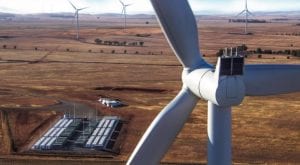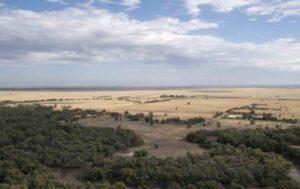Network utility Transgrid will press ahead with plans to construct an above-ground transmission link through the Kosciuszko National Park, linking the Snowy 2.0 project to the rest of the grid, despite strong opposition to the development.
Transgrid has been tasked with designing and constructing new network infrastructure that will allow the Snowy 2.0 project – currently under construction – to be properly connected to Australia’s main grid.
The project is set to see new above-ground high voltage power lines erected through the Kosciuszko National Park and it has attracted the ire of environmental groups who have argued that the project will have an unacceptable impact on the iconic national park.
The environmental impact statement for the network upgrades are being assessed by NSW Government planning authorities and it has attracted dozens of submissions from individuals and community groups, with around 65 per cent of the submissions expressing opposition and calling for the use of underground power lines.
“The apparent reluctance to acknowledge cost as the primary driver has resulted in an EIS that attempts to make a frankly Orwellian argument that underground cables have a greater environmental impact than would overhead towers in a permanently cleared easement,” the submission from the National Parks Association of NSW says.
“The proposition is simply absurd, the lower environmental impacts of undergrounding are precisely why overhead transmission is no longer regarded as acceptable practice on the international stage.”
None of the submissions expressed active support for the project, while around a dozen submissions – mostly from government entities – provided general comments and advice on the project.
The overwhelming concerns were the proposal to construct overhead powerlines through the Kosciuszko National Park, and the potential for impacts on the park’s biodiversity.
Environment groups have called on Transgrid to use underground network infrastructure to minimise the project’s long-term impact on the Kosciuszko National Park.
Transgrid pushed back on the request, arguing that there would still be permanent impacts on the park even with underground network infrastructure. Its latest assessment suggests going underground would also significantly increase the project’s costs while making it more challenging to maintain and repair the network link.
Transgrid said that design options that use overhead transmission lines would allow the project to be built at a cost of around $290 to $450 million while using underground power lines could increase the construction cost to between $1 billion to $1.4 billion.
“The merits of the project including the benefits of connecting Snowy 2.0 to the NEM are considered to outweigh any identified adverse impacts of this project,” Transgrid’s response to the submissions says.
“While some environmental impacts cannot be avoided, they have and would be minimised to the extent practicable through the implementation of mitigation measures and where residual impacts remain, they will be offset.”
While the expansion of the Snowy Hydro scheme will add much-needed energy storage infrastructure and 2,000MW to the scheme’s generation capacity.
But the project has attracted its own criticism, with environmental groups and a significant number of energy market experts saying the Snowy 2.0 expansion was likely to significantly exceed stated cost estimates.
The groups also argued that the Snowy 2.0 project would also have an unacceptable impact on the Kosciuszko National Park, described as the “worst possible project in worst possible location”.
The transmission link for the project is set to be one of a number of new transmission projects that are facing some level of community pushback due to the potential visual and ecological impacts, but will be needed to support the construction of new renewable energy and energy storage projects.
This week, Transgrid said that it had progressed early works at its EnergyConnect project, its share of a new interconnector linking South Australia and New South Wales.
Transgrid said that it had commenced the establishment of new workers camps and kicked-off new studies for the project as it prepares to start construction of its $1.5 billion share of the $2.3 billion interconnector. The link is expected to allow up to 800MW of electricity to be shared between the two states.
Transgrid will be responsible for the New South Wales side of the link – a 700-kilometre transmission line between Wagga Wagga and the South Australian border, while project partner ElectraNet will construct the remaining 200 kilometres of network link on the South Australian side of the interconnector.
“Not only will the new interconnector enable the sharing of electricity between New South Wales, South Australia and Victoria; it will also save NSW energy customers $180 million a year and generate up to 1400 new jobs,” Transgrid’s executive general manager of delivery, Craig Stallan, said.










